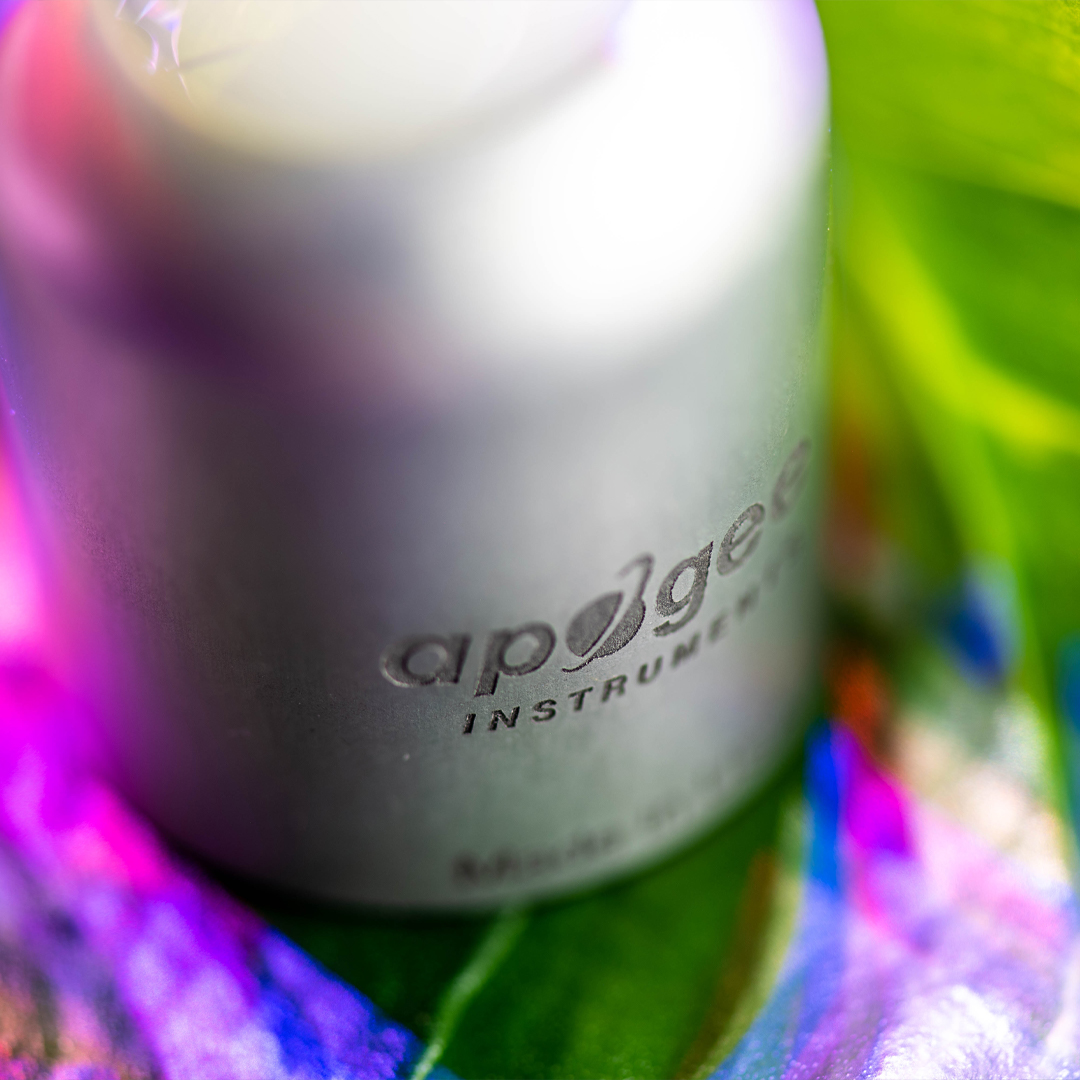The New 400-750 nm ePAR Range Explained
For the last 50 years, the definition of photosynthetically active radiation (PAR) is that it starts at 400 nm, stops at 700 nm, and is equal in between. This has been true since the days of Keith McCree, and it’s the definition Apogee’s SQ-500 Full-spectrum Quantum was designed to measure. Now, thanks to Dr. Bruce Bugbee and Dr. Shuyang Zhen’s latest research, the definition of PAR is changing.
Dr. Bugbee and Dr. Zhen recently published two papers just last year on this exact topic: “ Plant Cell and Environment” and “Frontiers in Plant Science.” Both articles focus on the effects of photosynthesis, and are fundamentally changing the definition of what we call photosynthetic radiation.
However, as Dr. Bugbee says, “If we’re going to change the definition of photosynthetic radiation, which has been for years and years 400-700 nm, we need extraordinary proof.” Part of getting that proof is measuring the correct wavelengths of light to get good data.
So Apogee developed a breakthrough cutoff filter (400-750 nm). This is a big deal because there is a far-red LED that most manufacturers are adding to their lights, and the SQ-500 sensor doesn’t catch those photons. But the new extended ePAR model (SQ-610 series) does catch that extra radiation and gives a simple, single number measurement.

For more in-depth explanations and knowledge, be sure to watch Dr. Bruce Bugbee's video!
